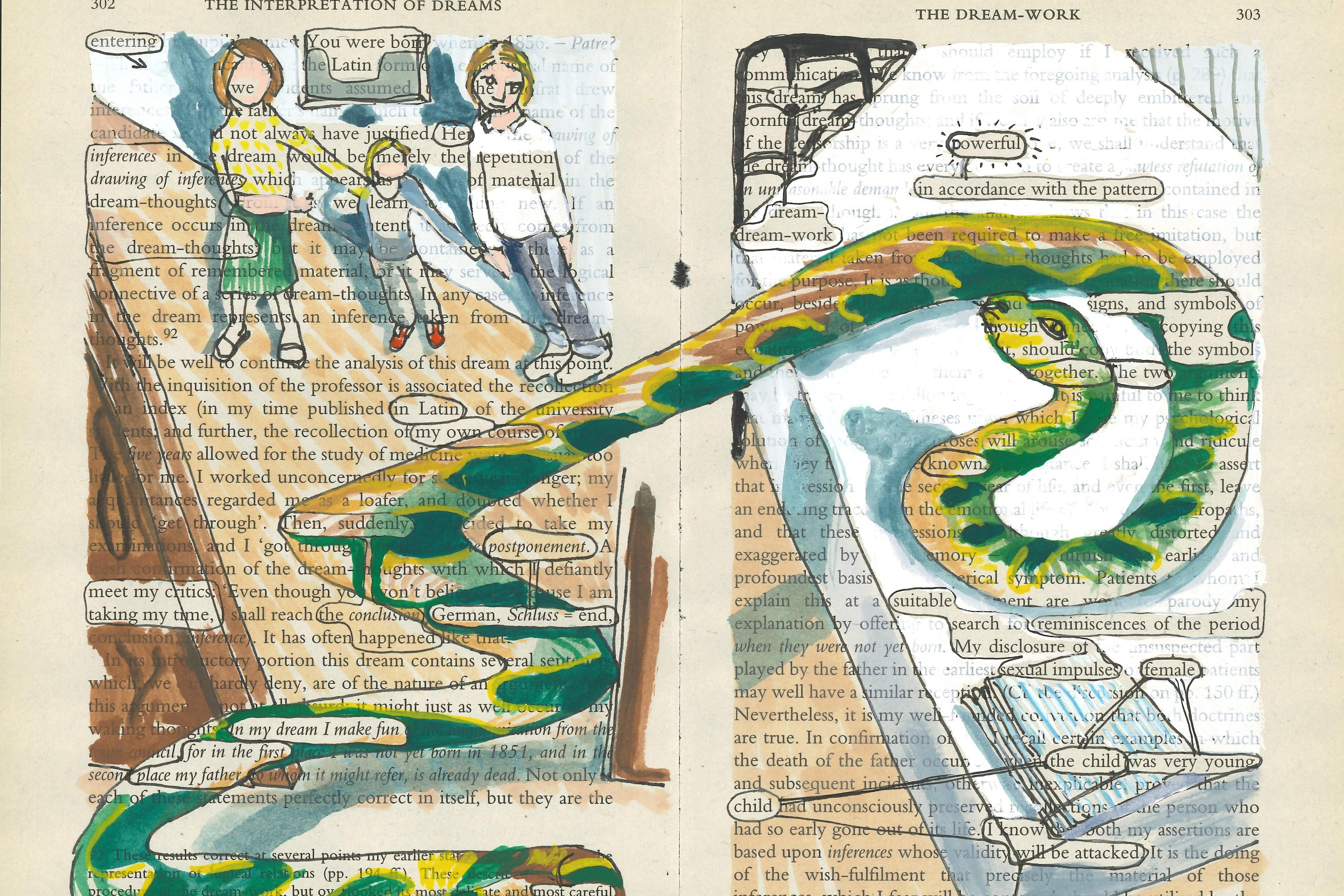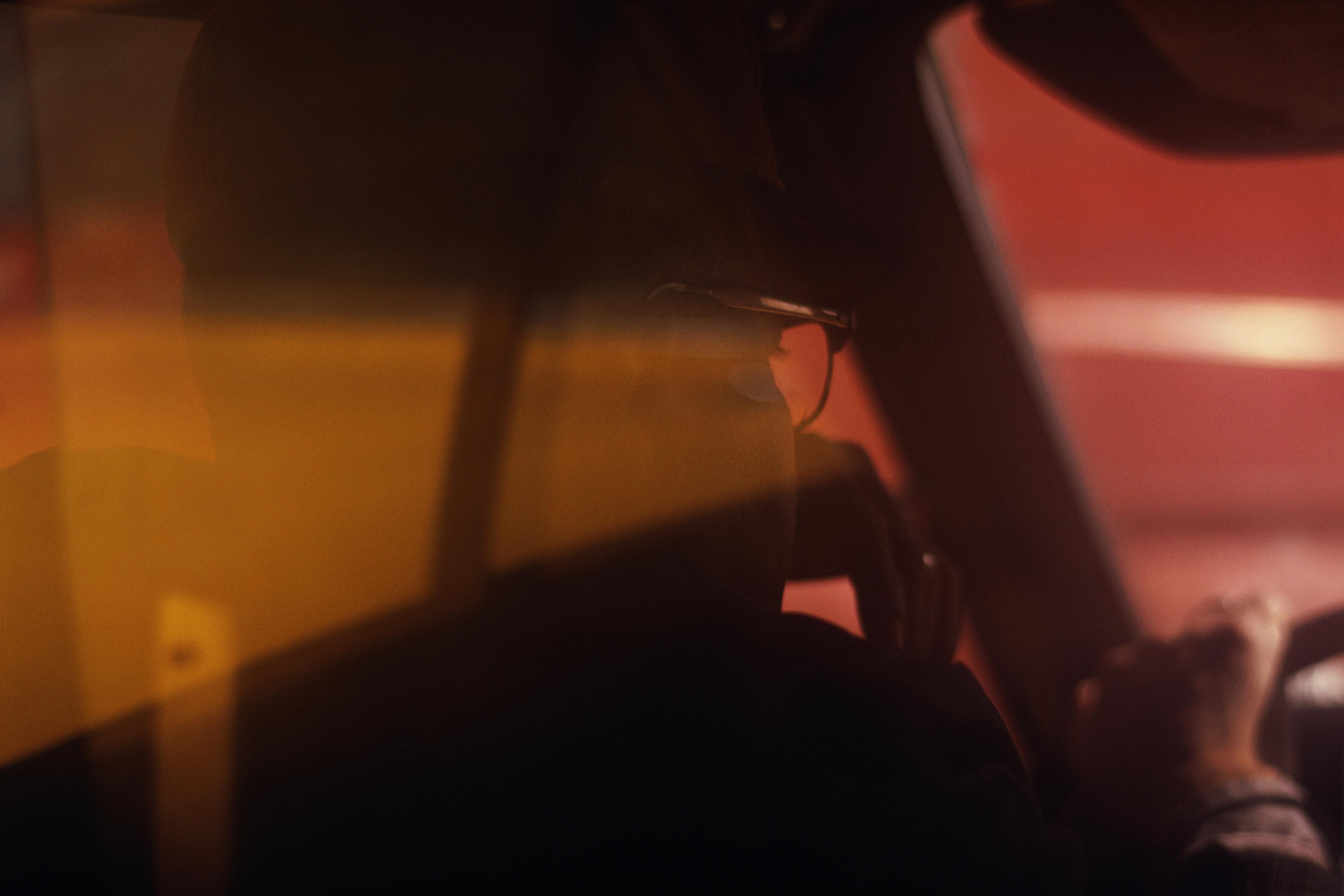My fascination with dream characters began while I was in college. That’s when, in the midst of a dream in which I knew I was dreaming (a ‘lucid dream’), I had my first encounter with an older gentleman, who tried to convince me that, actually, my experience wasn’t a dream. Over the next two decades, this man appeared in several other of my lucid as well as non-lucid dreams. He always maintained he was real, one time going as far as to suggest that we were sharing a common dream or, even more unsettling, that I was a character in his dream. Setting aside the intriguing nature of these exchanges, several aspects of this enigmatic dream figure were particularly striking, including his clever discourse, the liveliness of his gaze (which gave me a genuine feeling of ‘being looked at’ by another sentient being), and the fact that I never quite knew what he would do or say next.
Of course, characters in our dreams can appear one-dimensional or behave like mere ‘extras’ in a play, but others, like the gentleman I came to know, evince an intriguing degree of psychological depth – saying and doing things as if acting upon their own thoughts or feelings. Moreover, much as in waking life, we sometimes encounter people in our dreams whose actions elicit a myriad of physical and emotional responses within ourselves. Through their choice of words, facial expressions, tone of voice and mannerisms, not only can dream characters pull us into all kinds of discussions and interactions but, more amazing still, they can display convincing behaviours and feelings in response to different events taking place within the dream world.
Even in lucid dreams then, it is your dreaming brain, and not your conscious self, that is the true director and producer. Herein lies one of the great and often underappreciated mysteries of dreams: your brain is responsible for creating both your sense of self in the dream (often as a first-person participant or observer) as well as the virtual world with which you interact – including the people, animals and sordid creatures you might encounter – but it keeps key aspects of this process outside of your awareness. Alongside innumerable details of the setting (such as whether the sky is clear or dotted with clouds), this almost always includes what dream characters opt to say and do in your dreams, whether you’re lucid in them or not.
In one intriguing study from 1989 that illustrates the extent of this phenomenon, Paul Tholey, a German dream researcher and Gestalt psychologist, had nine proficient lucid dreamers ask people in their dreams to perform specific tasks, such as writing or drawing something, coming up with a rhyming verse or a word unknown to the dreamer, or solving simple mathematical problems. Not only were several dream figures willing to give such tasks a try, but some were surprisingly good at them.
For example, when one participant asked a dream character to produce a word unfamiliar to him, the character immediately said: ‘Orlog.’ This word really was unfamiliar to the dreamer. It was only upon waking that he learned, when he looked it up, that oorlog is Dutch for ‘war’ or ‘quarrel’. Likewise, when asked to write or draw something, some dream figures produced accurately rendered letters and sketches while sitting opposite the dreamer, with the dreamers sometimes having to rotate the sketch 180 degrees toward themselves in the dream to fully appreciate the drawing.
Dave Green, an English artist who uses lucid dreaming to create original sketches, recently described to me some similar unexpected twists in his dreams. For example, when Green asked a dream character to explain a drawing he’d just made, the man replied that he was from the Czech Republic. In another dream, a woman handed Green her finished drawing, only the sheet didn’t feature a sketch but a collection of random numbers and words.
Dream characters’ responses to arithmetic problems can be just as intriguing. In Tholey’s original work, as well as in a follow-up study from Germany in 2011, the vast majority of dream characters’ answers to even very simple maths problems, such as three times four or two plus three, were wrong. In a handful of cases, dream characters first gave a wrong answer, then corrected themselves. Moreover, when one lucid dreamer gave a dream character what he thought was the correct answer to the maths problem, the dream figure corrected him – and was right. Some of the characters’ emotional reactions to the questions were also peculiar. One dream character started to cry, another immediately ran away. In other cases, dream characters replied that the question was of a personal nature or that the answers involved were either too subjective or important to be shared.
The fact that dream characters can exhibit remarkable cognitive abilities, from speaking fluently (sometimes even with a foreign accent) to engaging in complex social interactions, to displaying a range of situation-specific emotions, reveals something astonishing about the dreaming brain. Alongside the unfolding story and your own sense of self, it can create a host of dream characters who not only interact with you (or among themselves), but also appear to have private access to their own subjective perception of, and reaction to, the events unfolding within the dream.
Experienced lucid dreamers will sometimes delve into this dynamic process by asking key dream characters potentially insightful questions such as: Who am I? Who are you? How can you help me? What is the most important thing I should know about what awaits us? Not only do some dream characters appear to take these questions seriously, but their replies can be startlingly witty or insightful. In rare cases, dream figures have even presented the dreamer with a possible solution to a pressing problem. I believe that, when used in this manner, lucid dreaming can allow you to explore and interact with parts of your mind (you might call it your unconscious) in ways that you can’t in non-lucid dreams – or during wakefulness, for that matter. To paraphrase the psychoanalyst Carl Jung, this way of interrelating with people in your dreams can help make ‘the unconscious conscious’.
Even if you aren’t a habitual lucid dreamer, you can still explore this facet of your dreams. Start by keeping a dream diary, which involves making notes on your dreams, either during the night if you wake then, or first thing in the morning. After you’ve collected about 20 or more dream reports, look for patterns in your dreams. For instance, where do your dreams tend to take place? Who are the people you most frequently see in your dreams? Are these characters present in dreams that have specific themes or emotions? Who do the characters remind you of and why? How do they make you feel, and how do you interact with them and they with you? As you explore these questions, you might learn more about the ways in which your brain constructs your dreams and, in the process, learn something new about yourself.
However, the way that your brain keeps much of the dream ‘script’ and dream characters’ minds outside of your immediate awareness isn’t just a fascinating quirk that’s worth exploring out of personal interest. Rather, some of my colleagues and I believe that it might play an important role in the biological function of dreams, helping to explain why we evolved to dream at all.
In our recent book, When Brains Dream (2021), Robert Stickgold, a sleep and dream researcher at Harvard Medical School, and I drew on scientific findings to argue that while dreaming, the brain explores novel and creative associations between recently formed memories and older, often only weakly related memories, and monitors whether the resulting narrative constructed from these memories induces an emotional response. If an emotional feeling is detected, we argue that the brain tags the association as potentially valuable, strengthening the link between the two memories and making the association available once you wake up.
This model suggests that one adaptive function of dreams resides in the brain’s ability to imagine possibilities within our dreams, to evaluate our reactions to them, and to use this information to better prepare us for an uncertain future. This overarching function of dreams is likely optimised when people react to their dreams much like they react to the things they consciously experience during wakefulness. And, for the most part, that’s exactly how we behave in our dreams. After all, it’s usually only after we wake up that we realise that the experience we were having was in fact a dream. While immersed in the dream-world, we typically believe that the dream is real, which is why we feel sad in a dream upon being told that a loved one has passed away, or bewildered by the fact that we find ourselves unprepared for that high-school exam, or why we run away in a panic from a knife-wielding figure.
If our model is correct, it would help to explain why the people we encounter in our dreams, while not physically real, certainly seem to behave as if they are, and why we, the dreamers, routinely engage with them as if they were autonomous, conscious beings. The unpredictability of dream characters is also consistent with, and important for, several other recent models of dream function, such as: the threat simulation theory of dreams (this is the idea that dreams evolved to help prepare us for a range of real-life threats and dangers); the social simulation theory of dreams (which sees dreaming as an evolutionarily adaptive mechanism that allows us to rehearse waking social perceptions and interactions); and the longstanding idea that dreams play a role in emotion regulation.
In all of these models, part of the efficacy of the presumed function of dreams depends on us being emotionally engaged by the dream narrative and believing (while still asleep and dreaming) that what we’re experiencing is real. Having characters in our dreams say and do things as if they were real, sentient beings certainly helps to make this possible.
Of course, the fact that the characters in your dreams might serve some evolutionarily advantageous function of dreaming doesn’t detract from the extraordinary nature of what’s going on when you sleep. Consider the notion that, since your brain is responsible for creating your dreams, any time a character says or does something that surprises you in a dream, you are, in a very real sense, surprising yourself. And who knows, maybe some dream characters are surprising themselves too. Now that I think of it, perhaps the next time I meet that older gentleman in my dreams, I’ll ask him what unexpected night-time encounters he’s experienced lately. As to how he’ll opt to reply, your guess is as good as mine.








